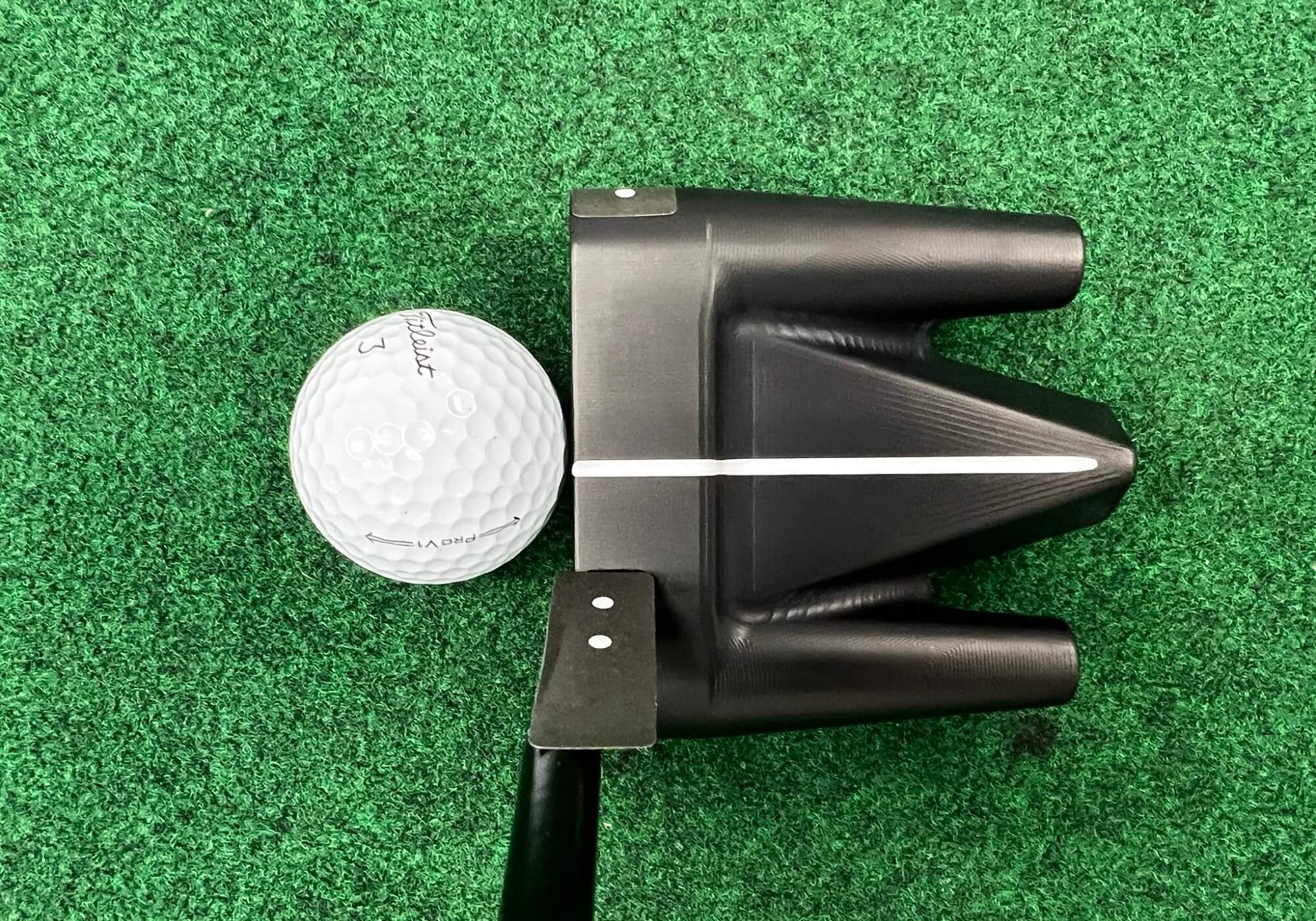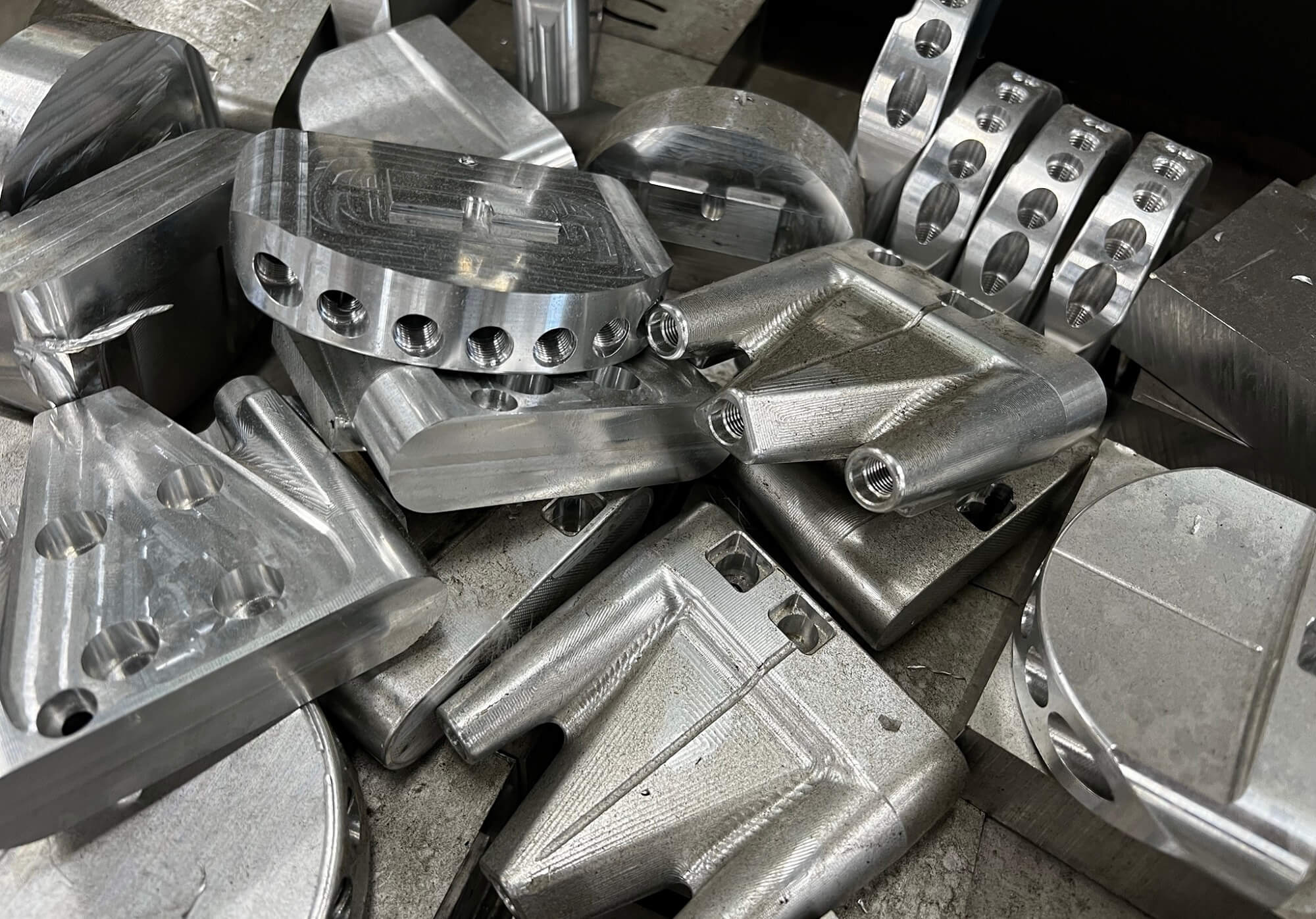Golfing News & Blog Articles
Makefield Putters: The Philadelphia Story
You’ve probably never heard of Makefield Putters.
You won’t find them at your local DICK’s, Golf Galaxy, Golfer’s Warehouse or PGA TOUR Superstore. And there’s a very small chance you might – might – find one of just 12 Makefield fitters in the U.S.
Seriously, what more would you expect from a tiny company headquartered in an out-of-the-way machine shop just outside of Philadelphia in Bensalem, Penn.?
And when we say “tiny,” we mean tiny: a handful of CNC milling machines, a small assembly team and a fitting studio the size of a minivan.

But then again, Karsten Solheim started PING in his garage. Gary Adams took out a $24,000 mortgage on his house to start TaylorMade in 1979 in a defunct TV assembly plant. And Bob Bettinardi became Bob Bettinardi after seeing a poster of a milled Callaway putter and deciding he could mill something better.
In other words, unless you’re backed by a buttload of money, everybody starts small.
Makefield Putters: Small Is Just a Word
“Our founder, Everett Farr, is an engineer by trade,” says Director of Brand Development Nick Biglasco. “He’s a product designer, inventor, a guy whose brain works nonstop.”
Farr is an entrepreneur who owns six different businesses in different industries including a CNC milling operation in Bensalem. He’s also a golf junkie but never thought about actually making putters until 2020 when COVID changed everything.

“Everett has an adult autistic son who requires round-the-clock care,” says Biglasco. “With all the COVID restrictions, his caretaker couldn’t come into the house so he’d leave work at noon every day to help his wife care for his son.”
While caring for his son was paramount, COVID did leave Farr’s nonstop brain with some idle downtime. He put it to use by watching YouTube videos on golf technology, putters in particular.
“What he came to realize is there’s a big deficiency in putter technology. He started to come up with ideas on how he could implement better technology in a putter head to improve ball roll, reduce skid and help some of the other factors you’re looking for to improve putting.”

With the help of fellow engineer and partner Matt Fuchs and local PGA pro Mike Little, Farr designed the original Makefield V-S putter. The V-S made its debut at the 2022 PGA Show and was cited as one of the most innovative club technologies of the year.
The V-S and The Path of Inertia
Yep, the original Makefield V-S putter is odd-looking. We’re not sure if it looks more like the front end of a ’48 Tucker Torpedo, the back end of a ’57 Chevy Bel Air or something out of a Batwing comic book.
But like most odd-looking things in golf, it looks the way it does for a reason. And that reason is what Makefield Putters calls the “Path of Inertia.”

Makefield’s key differentiator is a series of weight inserts made from tungsten, stainless steel and aluminum. Inserting those weights into the three milled channels running through the equator of the putter head, two things happen to the putter’s center of gravity. First, depending on which combination of weights you put where, you can shift the center of gravity forward or backward and toward the heel or toe.
Secondly, since some of the weights are tungsten, which is denser and heavier than the 6061 aircraft-grade aluminum of the head, the center of gravity moves up.
“By elevating the center of gravity to the center of the club head, the center of gravity of the club head is now meeting the center of gravity of the ball,” says Biglasco. “When you have those forces meeting equally, it’s going to increase forward roll.”

This, according to the Makefield Putters website, optimizes your path of inertia by balancing the club face to the path and minimizes wobbles in your stroke. And when combined with a reduced loft (1.5 to 1.8 degrees), it produces an immediate, consistent roll by reducing ball skid down to maybe six inches.
Makefield Putters: Fitting is a Must
If it sounds like there’s a lot going on here, it’s because there is. Makefield will sell you a V-S or one of its new small or large half-moon-shaped mallets online with a standard weight setting which it says should work for a wide range of golfers. But it’s the fitting process that makes the putter sing.
“If you come in and tend to miss right, we can add some weight to the toe and give you a little extra support,” explains Biglasco. “And we can adjust the other weights accordingly so we’re not impacting the balance of the putter.”

Makefield uses the Quintic Ball Roll System to quantify how its putters can improve face angle, stroke path and consistency as well as roll and distance control.
“Using Quintic alleviates me from being a salesperson,” says Biglasco. “Having your putter’s numbers and our putter’s numbers on a screen kind of makes the decision for you.”
Additionally, Makefield Putters just this year added a unique screw-in hosel system that allows fitters – and golfers, if they so desire, to swap out shafts.

“You can have a straight shaft, a double-bend or a slant-neck shaft. For fitters, you carry 10 club heads and 16 shafts. That gives them all the combinations they need for lie and length, right- or left-handed, heel- or center-shafted.”
Makefield has worked with some Korn Ferry players as well as high-end local players. The screw-in hosel allows them to swap out different weighted heads, depending on what type of greens they’re playing.
The Makefield Offering and Online Sales
While fitting is important, Makefield Putters does much of its business online. The company has three putters in its lineup. The original V-S debuted in 2022. And this past January, Makefield introduced its two half-moon shapes: the TF and the smaller TF Tour.

All three mallets are milled specifically to make use of Makefield’s signature weighting system.
The standard putters sell for $399. You can upgrade the grip and have customized laser engraving or logos, both for nominal upcharges. An optional weight kit with 18 additional weights and a wrench goes for $49.99.
“Fitting 100 percent of our customer base is unrealistic,” says Biglasco. “People who order online put the putter in play for a little while. Then they call us for help with fine-tuning.
“You want to empower customers to ask questions. They want to understand why the technology works and why it might save two or three strokes a round.”

Makefield does have a YouTube channel with a mix of informational and how-to videos to help the tinkerer with weight setup.
The relationship between golfers and their putters is very bipolar,” says Biglasco. “It’s really a ‘what have you done for me lately?’ kind of thing. But if we can give you something that’s consistent, that you don’t have to doubt or lose confidence in, that’s a step up from the vicious cycle of the putter merry-go-round.”
“If This Is Such a Great Idea …”
For the clinically skeptical, there’s an obvious question hanging out there.
Why hasn’t anyone done this before?

In reality, the concept isn’t original. The original Anser was designed to boost MOI through perimeter weighting while reducing skidding with a quicker forward roll. And the whole point of a mallet is to boost MOI. What Makefield is doing is simply using advanced CNC technology to take perimeter weighting, MOI and CG in a different direction.
“When I first started, I asked myself why this hadn’t been tried before,” admits Biglasco. “Maybe we did this out of necessity because we felt we needed to be different. The larger companies don’t need to go here. They have the customer base; they have the retail dollars. It’s not necessary for them.”

That point of being different came up several times in our conversation. A small putter company such as Makefield simply can’t against TaylorMade, Callaway, PING or Scotty. If they tried, they’d fail miserably and spectacularly.
The better bet is to find a niche and sell enough putters to make the venture worthwhile. That way, the only putter Makefield needs to compete with is the putter that’s already in your bag.
“When people come in for a fitting, our sales rate is something like 99.99 percent,” says Biglasco. “Quintic is showing you what your putter is giving you and it’s showing you what Makefield is giving you. I don’t need to sell anything at that point. They buy the putter and walk out happy.”

Even if the putter looks like a ’48 Tucker Torpedo?
“We’ve heard all the jokes before,” he says. “But what would you rather look at, the putter or the ball going in the hole?”
The post Makefield Putters: The Philadelphia Story appeared first on MyGolfSpy.


